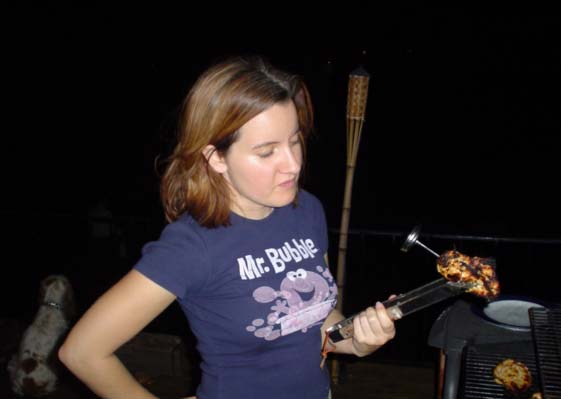BBC News reports that Dr Layla Jader, of the National Public Health Service for Wales, said at the British Medical Association conference in Edinburgh that TV chefs are setting a bad example by failing to follow basic hygiene standards, and that programmes often did not wash vegetables before using them or separate uncooked meat from other food, raising the risk of food poisoning.
(1).jpg) "I really get frustrated, I’ve seen it so many times. They bring in the vegetables, they open the bag and they make the salad straight from unwashed vegetables. They do it for the sake of expedience, but these programmes are watched by millions of people.
"I really get frustrated, I’ve seen it so many times. They bring in the vegetables, they open the bag and they make the salad straight from unwashed vegetables. They do it for the sake of expedience, but these programmes are watched by millions of people.
"It’s irresponsible. If they are going to do something that’s not healthy they should say: ‘We are in a hurry but please wash the salad and vegetables before you serve it’."
A spokeswoman for Ready Steady Cook said the programme followed the "very highest standards."
Celebrity Masterchef stated,
"Before contestants are allowed to cook they are thoroughly briefed by our qualified home economists on all aspects of hygienic food preparation. In addition they are also monitored whilst cooking as we take the health of everyone involved in the programme extremely seriously."
The problem is the highest standards sorta suck. And for the apologists who say that cleaning and handwashing occur off-camera … I doubt it. It’s easy to mention hygiene without preaching. Who wants to eat poop?
Mathiasen, L.A., Chapman, B.J., Lacroix, B.J. and Powell, D.A. 2004. Spot the mistake: Television cooking shows as a source of food safety information, Food Protection Trends 24(5): 328-334.
Consumers receive information on food preparation from a variety of sources. Numerous studies conducted over the past six years demonstrate that television is one of the primary sources for North Americans. This research reports on an examination and categorization of messages that television food and cooking programs provide to viewers about preparing food safely. During June 2002 and 2003, television food and cooking programs were recorded and reviewed, using a defined list of food safety practices based on criteria established by Food Safety Network researchers. Most surveyed programs were shown on Food Network Canada, a specialty cable channel. On average, 30 percent of the programs viewed were produced in Canada, with the remainder produced in the United States or United Kingdom. Sixty hours of content analysis revealed that the programs contained a total of 916 poor food-handling incidents. When negative food handling behaviors were compared to positive food handling behaviors, it was found that for each positive food handling behavior observed, 13 negative behaviors were observed. Common food safety errors included a lack of hand washing, cross-contamination and time-temperature violations. While television food and cooking programs are an entertainment source, there is an opportunity to improve their content so as to promote safe food handling.
(1).jpg)
.jpg)

(1).jpg) "I really get frustrated, I’ve seen it so many times. They bring in the vegetables, they open the bag and they make the salad straight from unwashed vegetables. They do it for the sake of expedience, but these programmes are watched by millions of people.
"I really get frustrated, I’ve seen it so many times. They bring in the vegetables, they open the bag and they make the salad straight from unwashed vegetables. They do it for the sake of expedience, but these programmes are watched by millions of people.(1).jpg)
